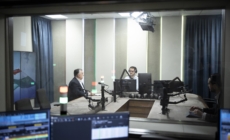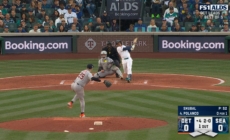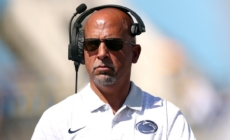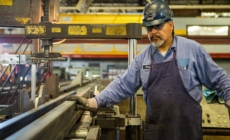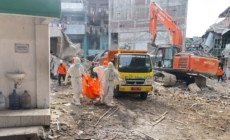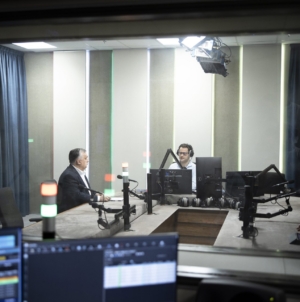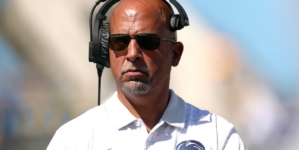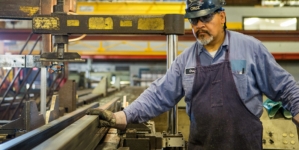-
Orbán: We don’t want to die for Ukraine - 17 mins ago
-
Jorge Polanco smashes solo home run to give Mariners the lead over Tigers - 29 mins ago
-
Penn State HC James Franklin Faces Backlash For Questionable Post - 35 mins ago
-
Government launches 3 percent fixed-rate business loan program - 51 mins ago
-
Jayden Daniels on injury concerns: "Everybody can stop talking on social media about the brace…I am good" - about 1 hour ago
-
Tension Growing Between Eagles’ Jalen Hurts, A.J. Brown: Report - about 1 hour ago
-
Nicole Kidman’s first appearance after Keith Urban divorce filing - 2 hours ago
-
Cowboys’ Trevon Diggs Could Face NFL Punishment After Swinging on Jets WR - 2 hours ago
-
Jacory ‘Bill’ Croskey-Merritt Runs Away With LFG Player of the Game vs. Chargers - 2 hours ago
-
Indonesia School Collapse Death Toll Reaches 49, 14 Still Missing - 3 hours ago
The Battle Over Rebuilding Pacific Palisades
The tranquil, upscale neighborhood of Pacific Palisades was devastated by the wildfires that ravaged Los Angeles County in January, destroying thousands of structures—including the home of celebrities such as Jeff Bridges, Paris Hilton, and Billy Crystal.
Months after the blazes, the aim is now to rebuild—but Pacific Palisades has found itself at the heart of a political battle over its future.
California Governor Gavin Newsom, widely seen as a likely presidential candidate in the Democratic Party for 2028, and President Donald Trump have been arguing over how the neighborhood should be resurrected on social media.
In as early as January, when the blazes were still burning in Pacific Palisades and nearby areas, Trump blamed the city’s, as well as the state’s, Democratic leadership for the devastation. Over the past few months, the fires have remained a partisan issue.
In mid-September, Trump said Newsom was ready to build low-income housing in the historically single-family home community, a move that he described as “unfair” to residents. Newsom said the claim was a “straight up lie,” adding that there is “no state effort targeting low-income housing in the Pacific Palisades.”
Caught in the middle are residents and wildfire survivors in Pacific Palisades who simply wish to return to their neighborhood.
‘The Fires and Recovery Have Brought Out National Political Ideologies’
“I think the fires and recovery have brought out national political ideologies,” Josh Stephens, contributing editor of the California Planning & Development Report, told Newsweek.
“Some right-leaning residents have excoriated the city’s and state’s left-leaning public officials,” he said. “I think those critiques are unfair. If you saw the firestorm, you know that no earthly power, on the left or right, could have stopped it.”
More than 800 homeowners in the Pacific Palisades, Altadena, Malibu and Pasadena areas destroyed by the fires had applied for rebuilding permits as of July, according to the Los Angeles Times. At least 145 had received approval to start construction on major repairs or replacement of their homes.
But the issue of rebuilding Pacific Palisades has also proven to be political. Newsom was targeted by false claims accusing him of working with developers to change zoning laws in the neighborhood in as early as January.
The state of California, in general, does not change local zoning, which is handled by city governments. Housing permits are issued by city and county authorities, not the state.
What is true is that, back in July, Newsom’s office and the California Department of Housing and Community Development announced the release of $101 million to fund the rebuild of “critically needed,” affordable multifamily rental housing projects in and around burn zones. The plan was to give priority to displaced residents affected by the January fires. The move, the governor said, was meant to help thousands of people displaced by the blazes, which have put a strain on the already tight L.A. rental market.

Amid concerns among residents and wildfire survivors, worried about denser development in their area, Newsom’s office issued an executive order later that month suspending the Senate Bill 9 (SB 9) in the Palisades, Malibu and Altadena territories ravaged by the fires, giving local governments the ability to limit how single-family lots can be split up to build additional housing.
SB 9 had been signed by Newsom in 2021. It allowed for property owners to build up to four units on areas that had been zoned for single-family homes in order to address the state’s housing shortage.
Still, Trump would respond to Newsom’s July announcement in a post to Truth Social in September.
“Shockingly, I have just learned, that Gavin Newscum, the Governor of California, is in final stages of approval to build Low Income Housing in Pacific Palisades. How unfair is that to the people that have suffered so much!” the president wrote.
In addition, Los Angeles Mayor Karen Bass banned duplex project applications within the Palisades burn zone.
“Mayor Bass has been laser-focused on leading L.A. through the fastest disaster recovery effort in modern California history,” Zach Seidl, spokesperson for Mayor Bass, told Newsweek.
“Thanks to Emergency Executive action taken by the Mayor, Pacific Palisades rebuild projects are being approved nearly three times faster than typical single-family home projects before the wildfires, and more than 7 percent of single-family permit clearances are no longer required,” he added.
“She has been clear that every day that families can’t return home is a day too long, and she will continue taking action to expedite every aspect of the recovery effort to get families home.”
Newsweek asked Newsom’s office for comment on the rebuilding efforts in Pacific Palisades and the social media clashes with Trump, but was referred to a previously published statement by the governor praising the speed and efficiency of debris operation in the area and its recovery.
What Do Residents Want?
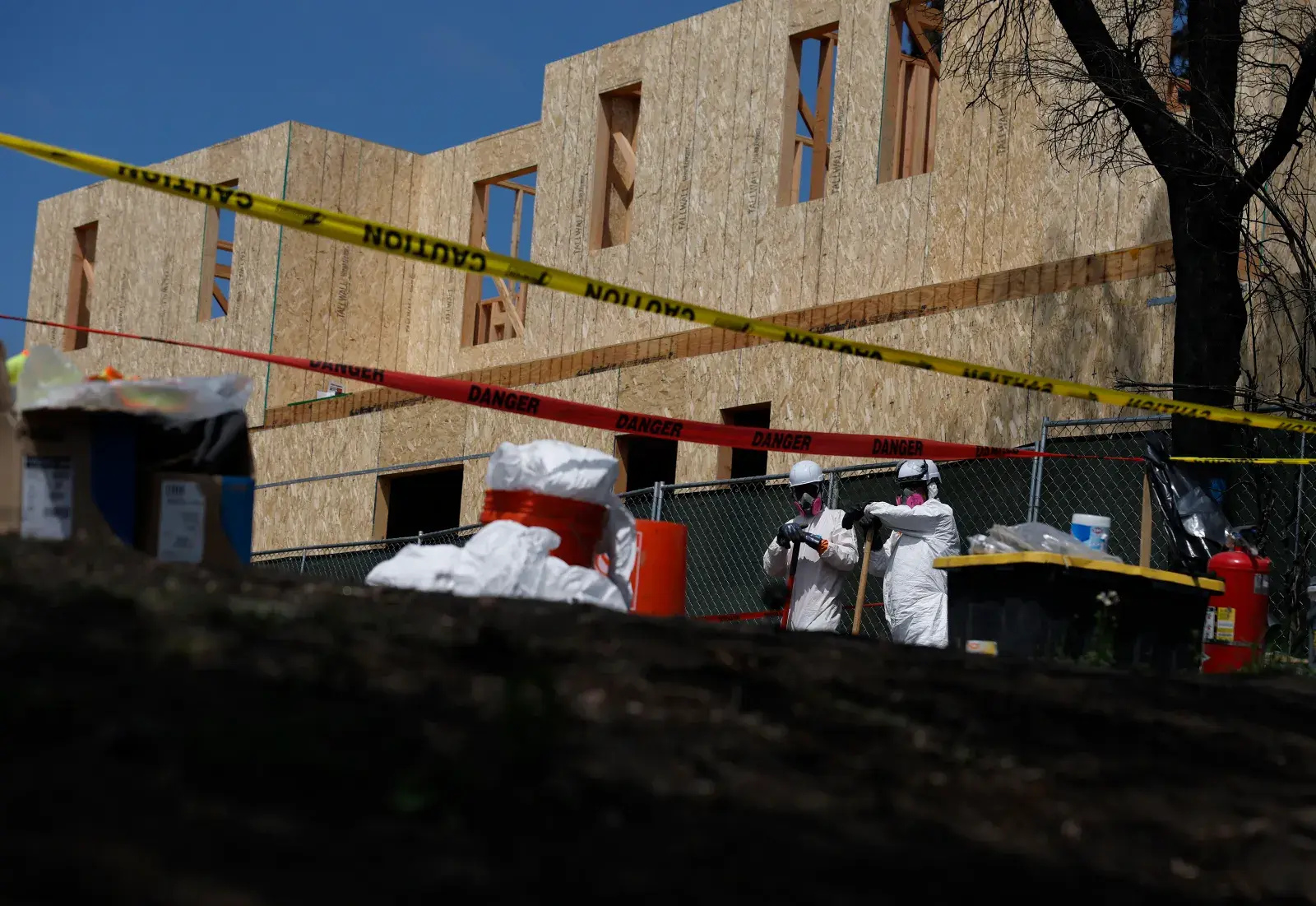
According to Stephens, the problem is that most Palisades voters do not want or need more housing density.
“They are, understandably, concerned about rebuilding their own homes in a neighborhood they considered very pleasant and are insulated from the city’s housing shortage,” he told Newsweek.
“The structure of the L.A. government gives individual city council members a great deal of power in their respective jurisdictions, so there’s little incentive for the Palisades’ councilperson to welcome anything other than a return to the past,” he said.
Stephens thinks there is a middle ground between the NIMBYism (Not In My BackYard) of residents and the need for building more and more efficient housing in California.
“The area can almost certainly accommodate more density with negligible impacts,” he said. According to Stephens, rebuilding presents an opportunity for slightly more density in the single-family areas, by way of accessory dwelling units but probably not duplexes, if the Palisades remains exempt from SB 9.
“One or two homes per block might rent out an ADU [accessory dwelling unit], and that’ll be great for a handful of new residents,” he said. “I do think some mixed-use in the commercial areas near Sunset Bl., whereby apartments sit on top of stores or offices, makes a ton of sense. A few hundred rental apartments could serve people who already work nearby and can do wonders to revitalize the area while individual homes get slowly rebuilt.”
Matthew Lewis, director of communications for California YIMBY, which describes itself as an organization aiming to pass legislation to end the state’s housing shortage, told Newsweek that the idea that allowing the construction of duplexes in the neighborhood would have ruined the community is fundamentally wrong.
“People sort of have this assumption, that if you allow duplexes, you will get a duplex on every lot. And that’s not actually what happens,” he said.
“You only get a duplex on the properties of people who want the duplex. So that might be one out of 20 or one out 50 homes. Even if you didn’t suspend SB9 at all, I don’t think you would have seen the kind of ‘density’ that people were afraid of, maybe one per block, which is not a radical change,” he added.
“And while it’s important to add as many homes as you can everywhere that you can, I don’t know that 100 duplexes or 200 duplexes would make a meaningful dent in the housing shortage. But again, it’s an important contribution. Every little bit counts.”
Pacific Palisades residents who lost their homes to the fires and are unable to shoulder the cost of rebuilding could have used SB 9 to soften the impact, Lewis said.
“There are many families that are actually going to use SB9 and build another home on their property as a way to finance the gap between their insured amount and how much they need to rebuild,” he said. “It gives them more flexibility and more access to capital to rebuild.”
In Pacific Palisades, however, they will not be able to do so.
Read the full interview with Matthew Lewis. The interview has been edited for length and clarity.
How did rebuilding Pacific Palisades become a political issue?
“There’s a bigger issue that sort of starts to explain the nature of the problem. Los Angeles is a largely dysfunctional metropolitan area. Its governance is very badly broken. I think a lot of folks might not realize this, but in Los Angeles County there are 88 cities. Most of those cities were formed specifically to create exclusionary boundaries around what used to be homeowners associations. The history of L.A. County is of new subdivisions getting built over time, more and more exclusive, more and more expensive. And in order to prevent the original city of Los Angeles from allowing more housing, more transportation, more businesses to be created there, they created new cities. That same exclusionary mindset has made Los Angeles the most unaffordable, large city in the United States.
“Those were deliberate policy choices. It’s an important context because part of how L.A. developed was by allowing and even encouraging more sprawl housing development into areas of extremely high fire hazard.
“So most of the new homes built in Southern California in the last 30 years have been in areas of extremely high fire hazards. And you have communities like Palisades that are primarily occupied by wealthier homeowners who also oppose housing reform. So you sort of have the perfect storm, where the same people who opposed housing reforms are now opposing the streamlining and the efforts the government is making to make it easier for them to rebuild. And you add on top of the incredibly emotionally charged aspect of actually losing your home in a fire. It’s a devastating emotional impact to a family to lose your home. They’re very susceptible to—for lack of a better word—propaganda by bad faith actors.
“The movement that I’m a part of, the Yes In My Backyard (YIMBY) movement, has been pointing out that actually we need to allow more apartments in denser urban areas because, not Pacific Palisades.
“But because Los Angeles is such a dysfunctional city, the city council was actually more inclined to follow the lead of these bad faith actors and right-wing social media influencers than all of the housing experts at UCLA and their own academic resources in L.A. around what should be done around housing.”
What do you make of the decision to ban duplexes in Pacific Palisades?
“The mayor of Los Angeles, Mayor Bass, is actually responding to this disaster with a purely political lens around what the anti-housing homeowners and Palisades want.
“And really, it’s kind of a joke. It was a purely cynical political play by Mayor Bass to suspend SB9 in Palisades. It will not apply anywhere outside of Palisade, not in Altadena. It was just that one particular area. And honestly, it’s kind of tragic because many of the Palisades residents were very wealthy and so they’ll be able to afford to rebuild, but there were many families that had been there for generations and were not necessarily super rich, but they did own their homes.
“They were under-insured in many cases. And so what that means is that the insurance payout they’re gonna get will not cover the cost of rebuilding. In Altadena, you have similar circumstances.
“There are many families that are actually going to use SB9 and build another home on their property as a way to finance the gap between their insured amount and how much they need to rebuild. It gives them more flexibility and more access to capital to rebuild.
“People sort of have this assumption, that if you allow duplexes, you will get a duplex on every lot. And that’s not actually what happens. You only get a duplex on the properties of people who want the duplex. So that might be one out of 20 or one out 50 homes. Even if you didn’t suspend SB9 at all, I don’t think you would have seen the kind of ‘density’ that people were afraid of, maybe one per block, which is not a radical change. And while it’s important to add as many homes as you can everywhere that you can, I don’t know that 100 duplexes or 200 duplexes would make a meaningful dent in the housing shortage. But again, it’s an important contribution. Every little bit counts.”
How do you think Pacific Palisades will be rebuilt?
“There’s gonna be a much higher threshold for fire building codes, for land clearing, for safety, which is appropriate. But that adds to the cost of rebuilding. I think that they’re going to be required by both state and local codes and by the insurance industry to build to the highest standards of fire safety.
“It’s less of a question of what do the people of Palisades want at this point and more a question of what they will be allowed to do. Unfortunately, we are reaching a stage in California where there’s so much fire risk now that the way people rebuild after a fire, if they can afford to rebuild at all, will largely be dictated by fire codes and the insurance industry.”
Source link
